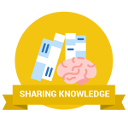![]() EXPERT
EXPERT
Emerson M Jou
Physiatrist (Physical Medicine)
- Honolulu, HI
- Accepting new patients
Samples of Pain Mismanagement
One day on a flight from Honolulu to Los Angeles, I responded to an in-flight call for a doctor offering my help as always. A young doctor was there ahead of me tending to a female...




